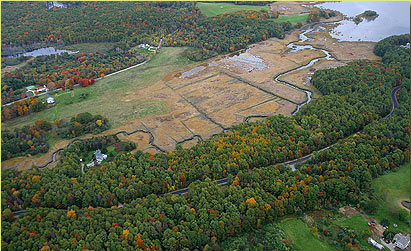The Partnership’s conservation work begins with conservation planning which provides the foundation for selecting land conservation priorities and advising management decisions. This science-based process provides critical information about the ecosystem, wildlife habitats, and water quality resources. Collaboration among local, regional, state and federal Partners builds a consensus process for decision-making on land conservation projects and stewardship programs.
Since 1997, the Partnership has coordinated landscape-scale regional plans, habitat inventories, management plans, and research projects studying climate change impacts, invasive species early detection and control, protecting in-stream habitat conditions for aquatic species, identifying migratory fish passage opportunities, and addressing control of excessive nutrients.
The New Hampshire Coastal Watershed Conservation Plan, 2021 currently serves as the blueprint for identifying key conservation priorities in the coastal watershed. The Plan synthesizes the most recent data and conservation science to prioritize protection efforts in Coastal Conservation Focus Areas and Agricultural Resource Areas. These priorities represent a broad set of conservation targets and values including water quality and quantity, regionally important wildlife areas and habitats, migratory bird habitat, working landscapes, recreational and educational opportunities, climate resiliency, and landscape connectivity. The values align with the conservation and stewardship goals of the Great Bay Resource Protection Partnership.
NH Coastal Watershed Conservation Plan 2021 information is available on the Connect to Protect site.
Conservation Planning Reports and Tools

